Wainscoting ideas – 10 statement ways to add decorative panels
Our favorite wainscoting ideas will inspire your next room remodel


When it comes to wainscoting ideas, there are many designs available to suit the age of your house and personal taste. Some incorporate a richer effect, such as hand-carved friezes and pilasters, others have a traditional aged and polished finish, and some, such as the Tudor linenfold, are highly decorative.
It is entirely personal, but a typical approach, just as with other wall paneling ideas and wall decor ideas, would be to match the style of the wainscoting to the period of a house.
Many of the rooms that we design include wainscoting. It has aesthetic as well as practical benefits,' says Bruce Hodgson, founder & creative director, Artichoke. 'Often, you might think of wainscoting and paneling in the library of a grand country house, but it has more informal uses, too.'
'Historically, the working areas of houses would often have wainscoting – a simple form of tongue-and-groove paneling – to protect the walls and, today, the same approach can be used in entryways and laundry rooms. Wainscoting can also be a useful way of straightening up wonky walls or hiding essential services such as pipes and cables.
Wainscoting ideas
For centuries, homeowners have installed wainscoting to protect their walls from chair damage, scuff marks, and other damaging elements. In a nutshell, wainscoting is a type of decorative wall paneling. Whereas paneling can be placed from floor to ceiling – or even on the ceiling – wainscoting is traditionally limited to the bottom half or three-quarters of a wall.
While wainscoting is often associated with period homes or traditional interiors, they are actually a really useful décor element for layering and adding texture to modern spaces, too. Below, we show you a whole range of contemporary wainscoting ideas to suit all room styles, purposes and sizes.
1. Add interest to a neutral room
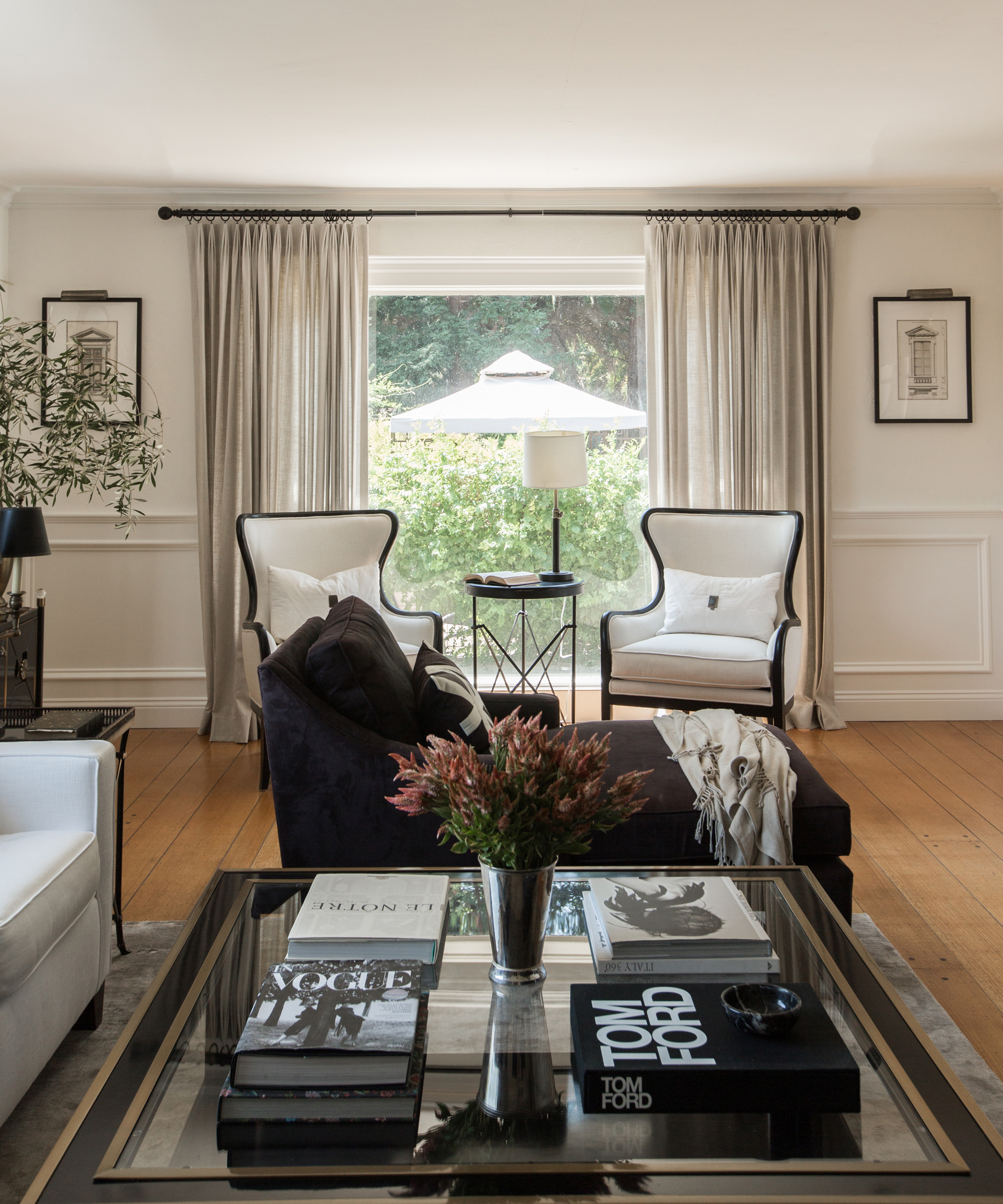
If you're toying with the idea of white living room ideas, you will want to introduce plenty of textural interest. 'Wainscoting is a useful way of introducing warmth and character to a room – there is something cozy about being surrounded by wood,' says interior expert Corine Maggio of CM Natural Designs who designed this space in California. 'Panel mouldings are used to create shadow and catch the light, adding a definition that is particularly important when you opt for painted panels.'
If you are opting for a traditional hardwood wainscoting, it is essential to commit to looking after it correctly, says Brian Purnell, owner, Distinctive Country Furniture. 'The very hot and dry atmospheres found in modern homes can cause damage, so it is worth trying to mitigate that by either keeping the heating set at a lower temperature in the paneled rooms or by introducing some humidity to the atmosphere. Remember to wax the wood once a year with a beeswax polish, too.'
2. Wow with the wallpaper

Embrace your keen eye for design by pairing striped wallpaper ideas, which goes straight up the wall and right across the ceiling, with a neutral, wainscoted base. Of all the different patterns, stripes are perhaps the most successful to take up to the ceiling, but keep the colors on the quiet side to ensure the room remains light rather than boxed in. Here, the plain-painted wainscoting acts as an important breathing space.
3. Use color to make your space sing

it is a misconception that wainscoting is only for traditional homes. In a contemporary scheme, colorful wainscoting will make a dramatic statement. We love a 'more is more' approach to decorative room ideas, and painted wainscoting is a brilliant vehicle for this.
The deep green Luke Edward Hall has used on the wainscoting makes the vintage pieces from French and English markets, the toile de Jouy wallpaper and the geometric floor sing.
'When decorating with this bright shade recently, I was after a very specific kind of green,' says Luke Edward Hall, founder, Luke Edward Hall. 'You know how in the early days of spring, after a long winter, fields of grass can look so vivid they appear almost artificial? That’s the shade I was after! It works well with a subdued brown or pale blue.’
4. Introduce wainscoting in an entryway
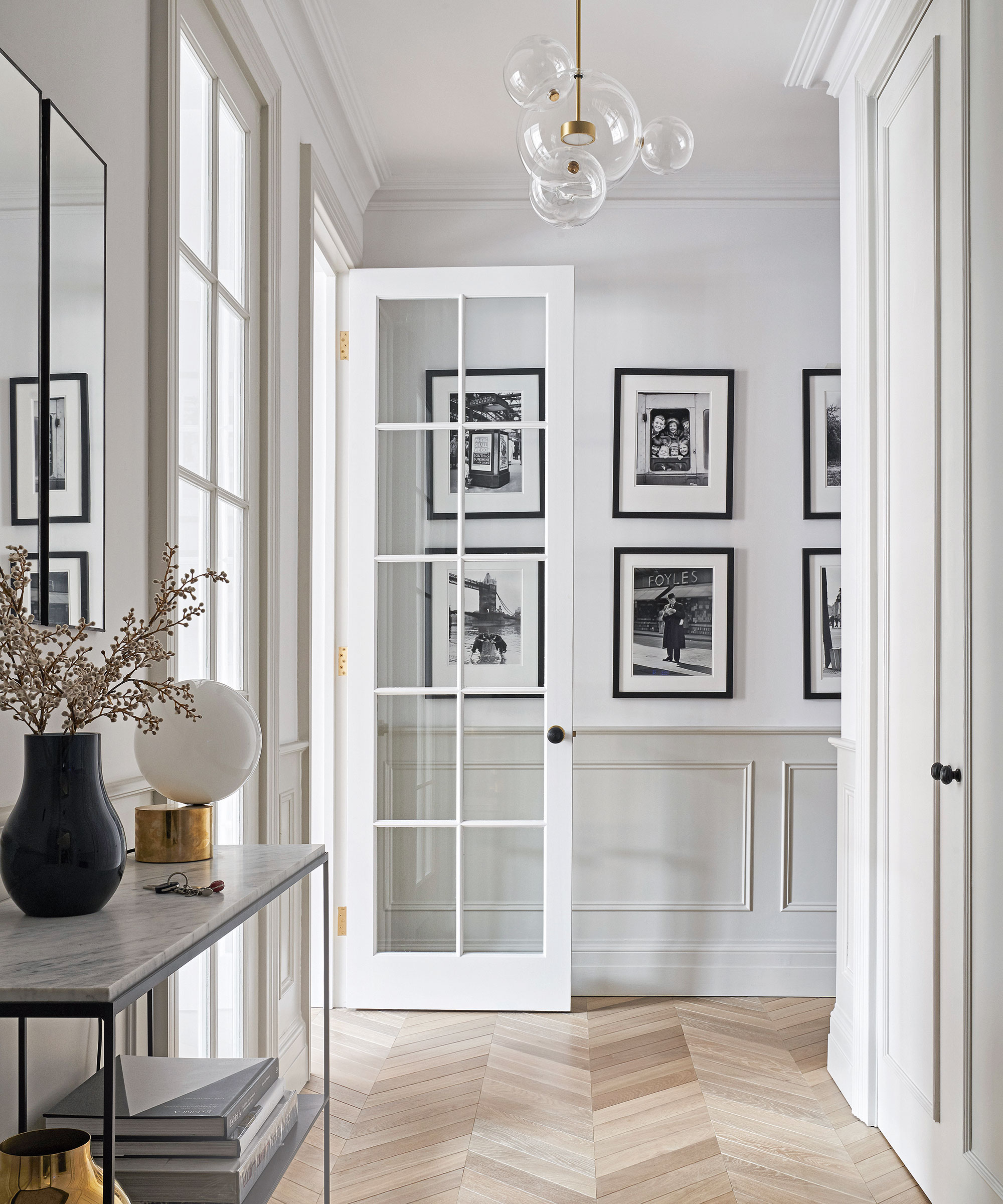
In period properties, wainscoting ideas that match or complement the original style and architecture of the property are a wonderful way of marrying old with new. Alternatively, in a plain room that is lacking decorative details or any original architecture of its own, adding wainscoting is a clever way of bringing character to a featureless space.
In a contemporary environment, wainscoting is an excellent way of framing large, flat surfaces,' says Bruce Hodgson, founder & creative director, Artichoke. 'Post-war wainscoting, for example, was typically slightly flatter and less ornate than previous styles, and relied more heavily on the grain in the wood as a decorative detail.'
5. Let wainscoting become the main attraction
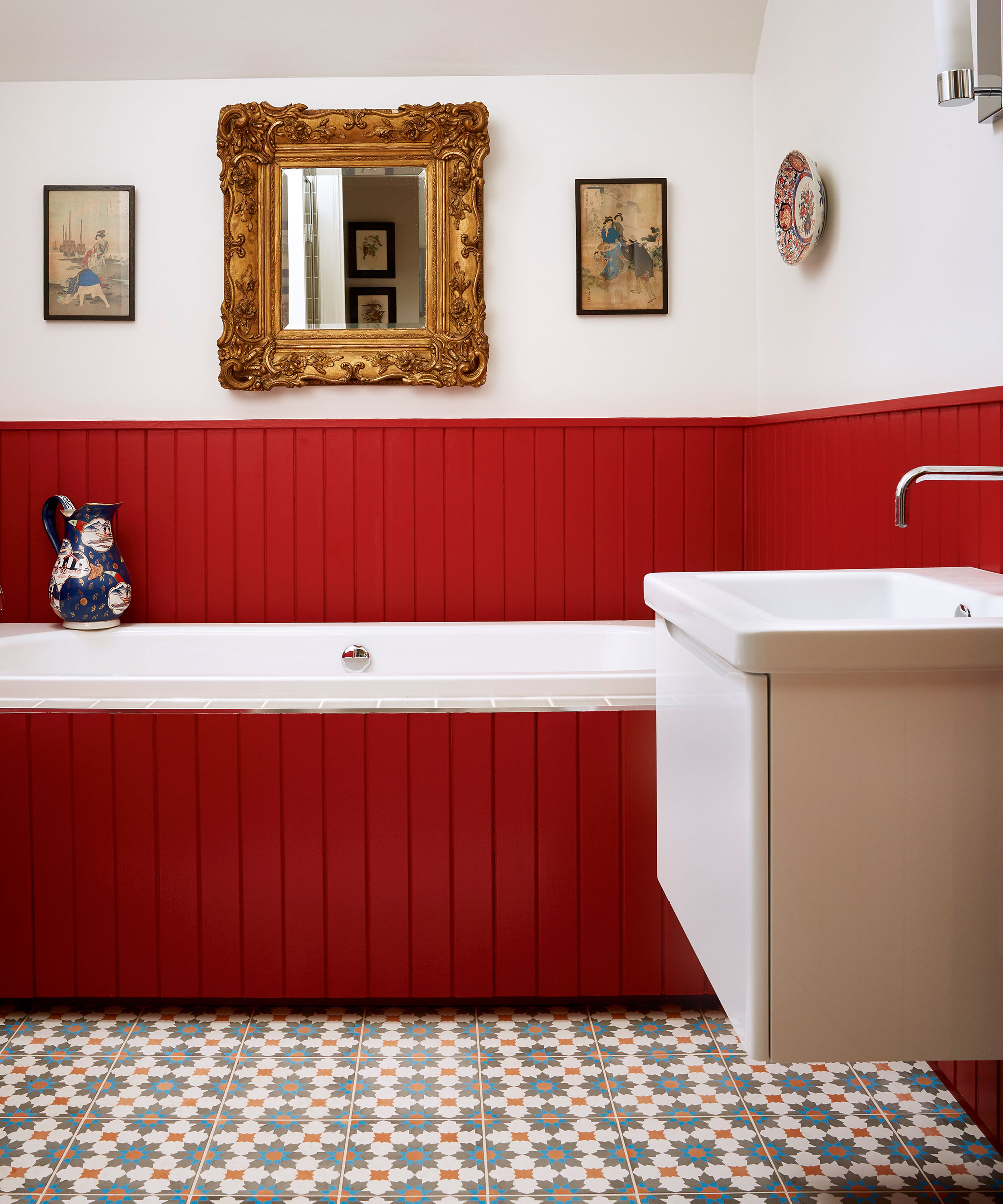
‘When it comes to dynamic wainscoting ideas, pick a bathroom color you truly love as it will be with you for a long time,’ says Emma Deterding, founder and creative director, Kelling Designs. ‘The key is to let the wainscoting be the main attraction, so pick a color that will truly sing out, then use this color elsewhere to keep the look cohesive.’
6. Keep it simple and understated
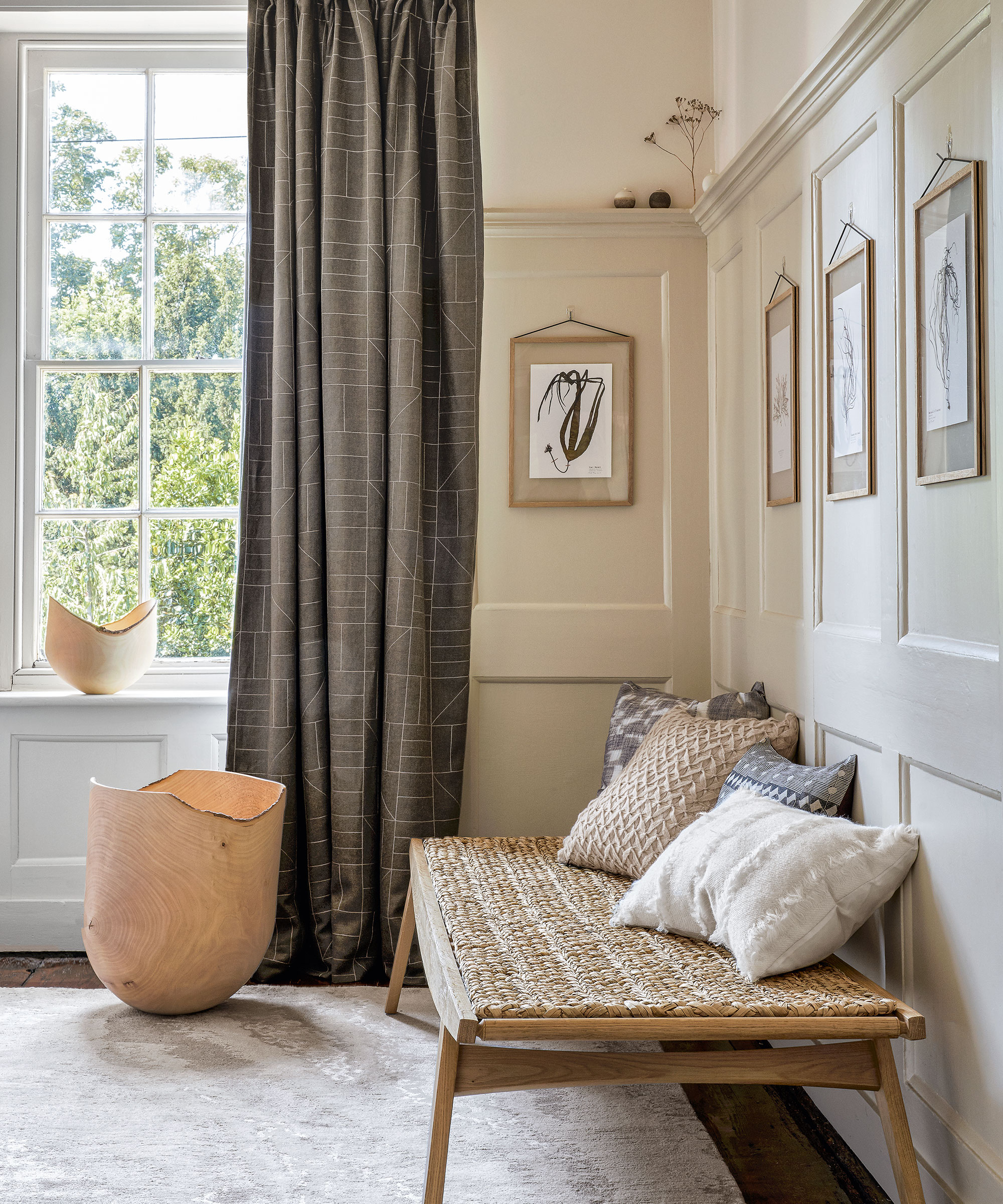
Opt for simple tongue-and-groove wainscoting to create a more relaxed, country-style look. An easy option for a competent DIYer, tongue-and-groove wainscoting simply requires a batten framework on the wall as a fixing point, with timber panels simply slotting together and nailed in place.
Wainscoting makes a clever cover-up for walls that are less-than perfect and will conceal bumpy plasterwork or peeling paper. Finish off wainscoting by adding a slimline shelf trim on the top edge. A narrow ledge can be a lovely decorative feature styled up with treasured finds and favorite ornaments.
7. Combine wallpaper and wainscoting
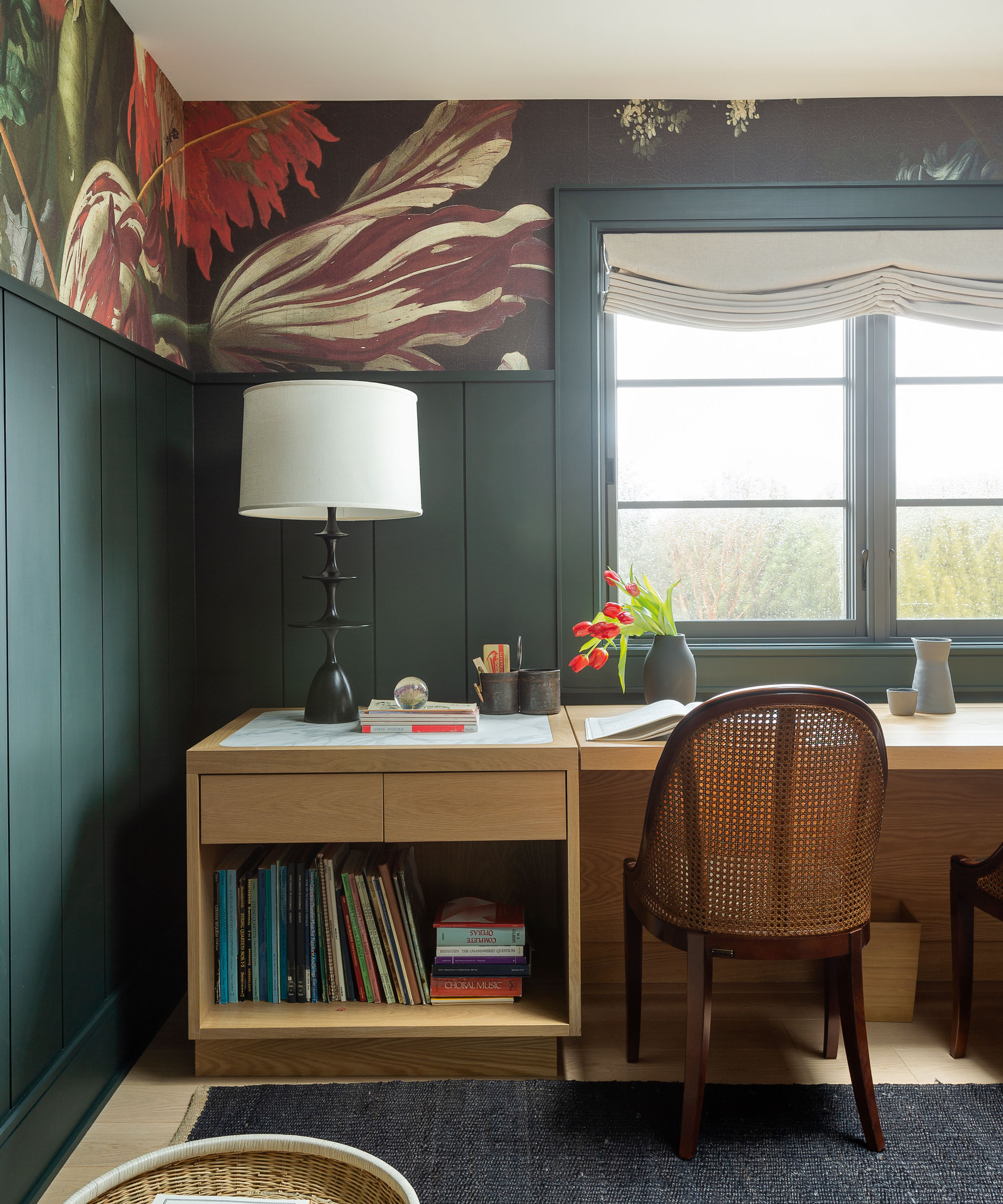
We all well know the transformative power of color and pattern, and wallpaper is sure to maintain the softness of a space. In a smaller room, a clever solution can be a combination of wallpaper and wainscoting; this is visually interesting and also ensures the room is not overpowered by a loud print. If your desk sits in the corner of a larger space, then paper can be used to define the work area.
In terms of color, choose calming hues to ground the scheme and encourage thoughtfulness. Blues bordering on grey are successful: color theories suggest these tones increase the ability to focus. Dark green (such as Studio Green by Farrow & Ball, used here) is another contender, as it’s meant to boost creativity.
8. Protect bathroom walls with wainscoting
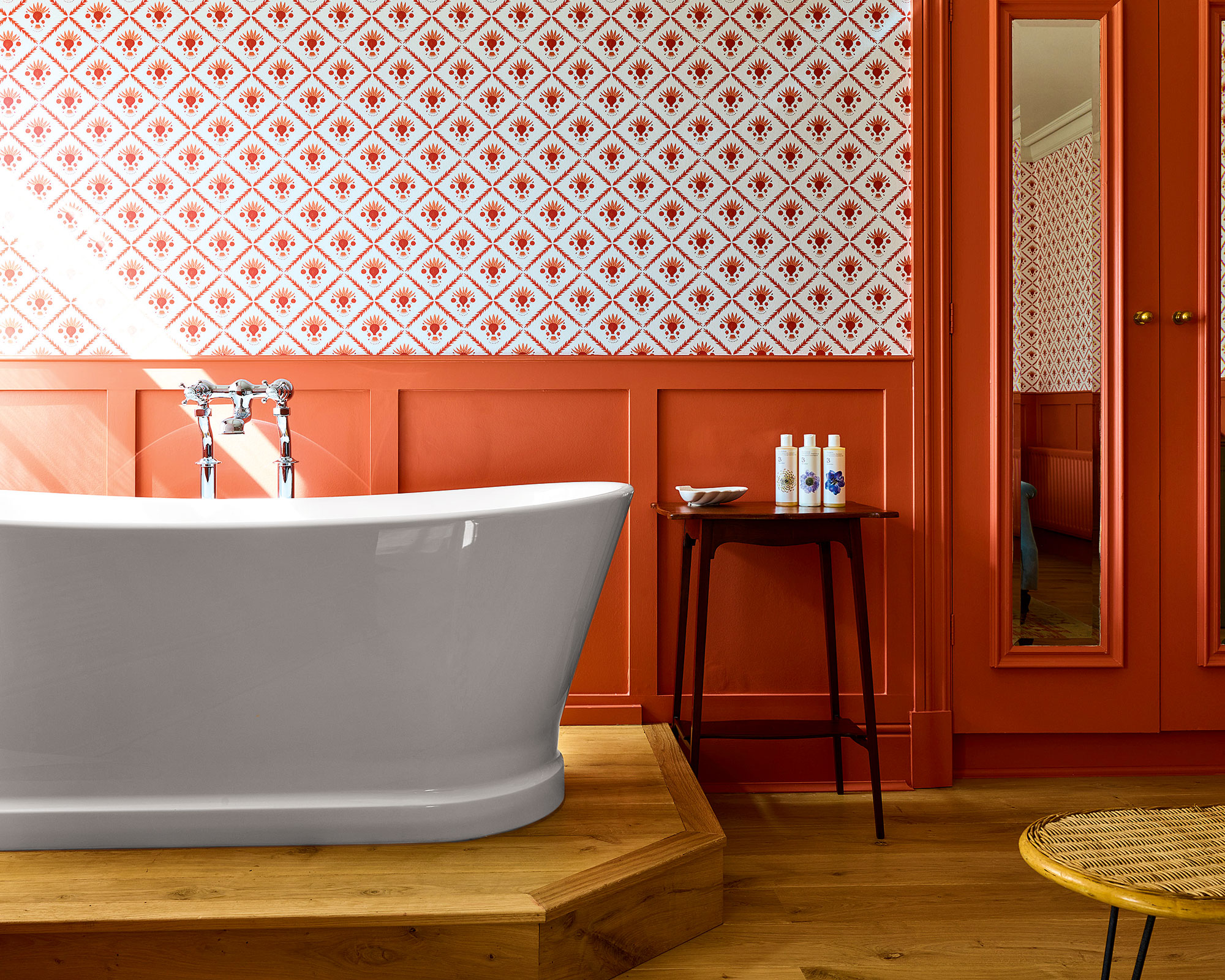
‘A considered combination of wallpaper and wainscoting is a great way to stop bathrooms feeling too sterile and for creating truly happy spaces, which I believe every bathroom should be,’ says Nicola Harding, owner of Nicola Harding & Co.
‘Installing wainscoting helps protect wallpaper from the danger zone, where water is most likely to splash, while also providing another opportunity to add cheerful colors.’
9. Color match walls to wainscoting

‘Wainscoting ideas are a great way of adding another layer of interest and making a space feel cozier. All too often they are an afterthought but we make sure to consider their potential,’ confides interior designer Jamie Ivey of Ivey Design Group. ‘Using the same color throughout helped extend the walls in this family room.’
Patrick O’ Donnell, Brand Ambassador at Farrow & Ball agrees: 'Carrying the wall color onto all of your woodwork creates the illusion of more space.' Wrapping a space in a warming layer of color not only creates a smart, cohesive feel, it can make a room feel bigger than it actually is.
10. Paint wainscoting for a playful look
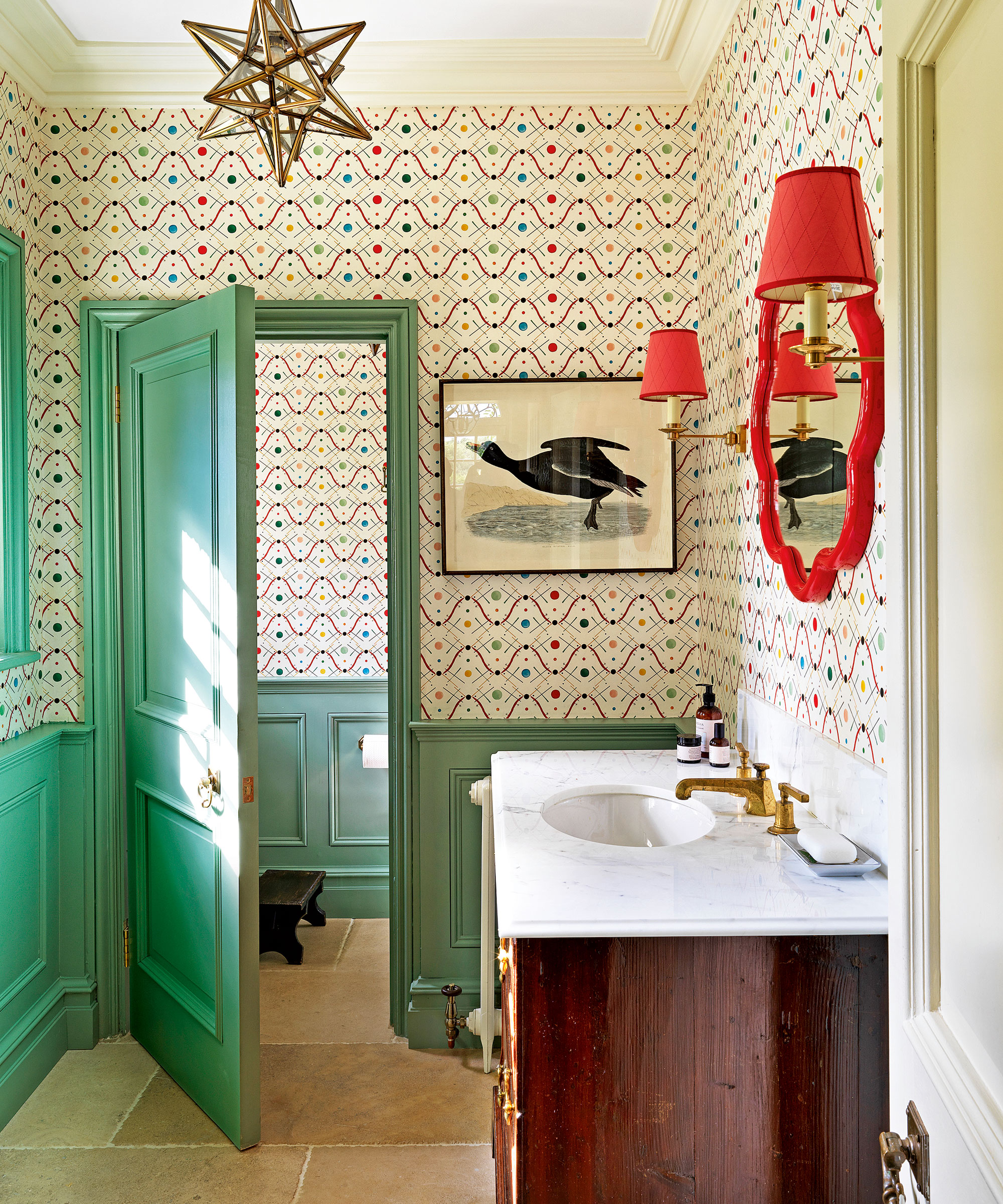
In this bathroom in the home of Aurelia Skincare founder Claire Vero, Salvesen Graham has expertly worked color and pattern.
‘Picking up a color tone in the wallpaper on the wainscoting and woodwork is a lovely way to introduce a further element of decoration to a scheme,’ says co-founder Mary Graham. ‘For practical reasons, wainscoting can also provide additional resistance to everyday wear without diluting the wallpaper’s power to impress.’
What is the purpose of wainscoting?
Even if you feel unfamiliar with the term 'wainscoting,' it is highly likely that you have seen this type of wood paneling before. For centuries, interior designs, builder and homeowners alike have installed wainscoting to protect their walls from knocks and scuff marks.
Can I have wainscoting in a modern home?
It doesn’t matter what period your property is, but it’s important to do your research to match the design of the wainscoting with the house’s age. This is always a key consideration for us, as we want to be as authentic and as sympathetic as possible to the original architecture of the building. Paneling and wainscoting can also work in modern homes but I would keep it simple, starting with a traditional design and paring it back.
Does wainscoting make a room look smaller?
Wainscoting (paneling on just the lower half of the wall) works particularly well in entryways, powder rooms and any high-traffic areas, as a way of protecting the walls from scuffs and marks. It is usually painted in a more durable grade of paint, such as eggshell – at H&G we tend to recommend intelligent finishes, which are easily wipeable, so far easier to clean.
Keeping the paneling the same color as the walls can give a great subtle texture to the space, and often create the illusion of a much larger area. Or for those who are feeling more daring it’s a great opportunity to be more playful with color and can look great mixed with the right wallpaper.
Wainscoting is also a great way to hide coat storage and doorways leading to guest powder rooms off entryways, halls and under the stairs. If paneling is used throughout and on all the walls, the doors disappear into the paneling, becoming part of it.
Sign up to the Homes & Gardens newsletter
Design expertise in your inbox – from inspiring decorating ideas and beautiful celebrity homes to practical gardening advice and shopping round-ups.

Jennifer is the Digital Editor at Homes & Gardens. Having worked in the interiors industry for several years in both the US and UK, spanning many publications, she now hones her digital prowess on the 'best interiors website' in the world. Multi-skilled, Jennifer has worked in PR and marketing and occasionally dabbles in the social media, commercial, and the e-commerce space. Over the years, she has written about every area of the home, from compiling houses designed by some of the best interior designers in the world to sourcing celebrity homes, reviewing appliances, and even writing a few news stories or two.
-
 This once-dated kitchen is now a timeless space with the coziest details – and its the classic color palette that's made it a chic, welcoming space
This once-dated kitchen is now a timeless space with the coziest details – and its the classic color palette that's made it a chic, welcoming spaceWarming colors and natural materials combine to create this enduringly classic kitchen scheme
By Molly Malsom Published
-
 How to grow crepe myrtle in pots – and transform even the smallest of yards with dazzling flowers this summer
How to grow crepe myrtle in pots – and transform even the smallest of yards with dazzling flowers this summerGrowing crepe myrtles in pots will inject splashes of brilliant color into your outside space
By Thomas Rutter Published